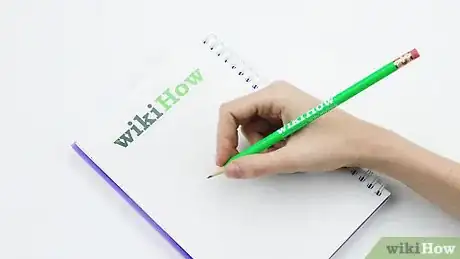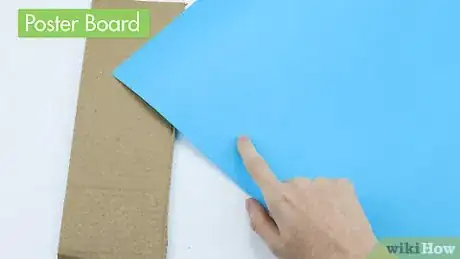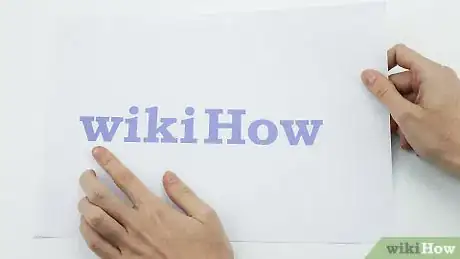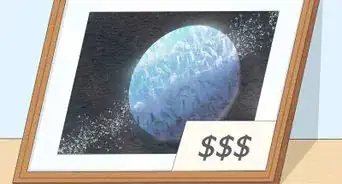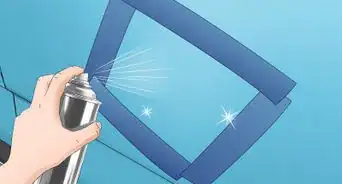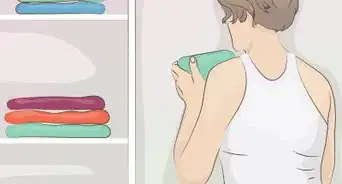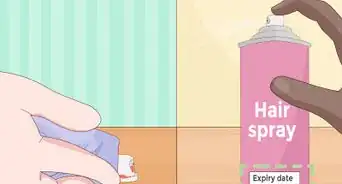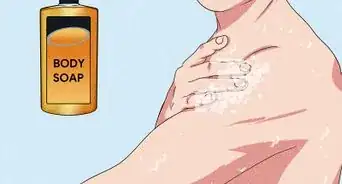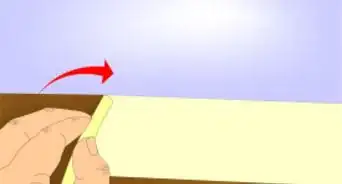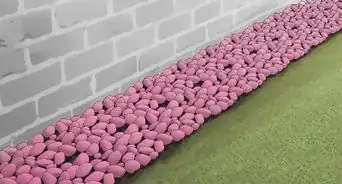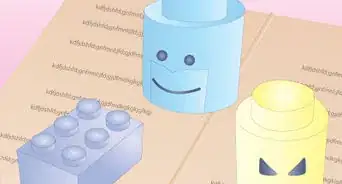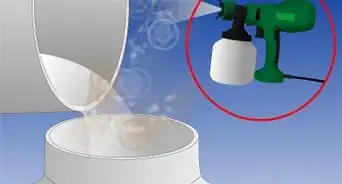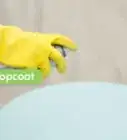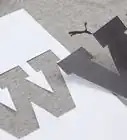wikiHow is a “wiki,” similar to Wikipedia, which means that many of our articles are co-written by multiple authors. To create this article, 26 people, some anonymous, worked to edit and improve it over time.
The wikiHow Video Team also followed the article's instructions and verified that they work.
This article has been viewed 878,158 times.
Learn more...
Spray paint pictures of stencils range from simple hearts or circles to complex city scenes or realistic portraits. Homeowners may make spray paint stencils to liven up an old piece of furniture or create a border in a room. Artists are usually more interested in making intricate stencils in order to fully portray their thoughts or ideas.
Steps
Planning to Make a Stencil
-
1Think about your overall design plans. Consider what the stencil is to be used for--say, a small decoration on a box or a pattern for use on your walls. How will your use of the stencil influence the design you can use? Here are a few specific points to consider:
- Don't use paper. Determine what size of stencil you need. If the stencil is going to be large, it is okay to include small details. If the stencil is going to be small, a simpler design should be used.
- Know how many colors you want to include in the stenciled image. You can use multiple stencils and each will be used with its own layer of color. These factors will affect the amount of materials you need and the number of stencils you need to create.
-
2Draw an initial sketch of the image (if applicable). At this point, you are only trying to develop the image that will become the stencil. You can experiment with patterns or attempt to hone a design that you had intended from the start.Advertisement
-
3Choose the type of stencil material you want to use. There are a variety of materials that are suitable as stencils, but you need to consider how much use the stencil will have (one time or many?) and the ease with which you can work with the material.
- Cardboard or foam board are good for large, simple stencils on flat surfaces.
- Paper works for a single-use stencil on either flat or rounded surfaces.
- Poster board holds up better than paper and can be used on flat or slightly rounded surfaces.
- Plastic or clear acetate are good if creating reusable stencils for either flat or rounded surfaces.
- Frisket film, which is a clear film with a slightly sticky backing, is good for flat and rounded surfaces.
Making A Stencil
-
1Create the final image with clean lines and good contrast. The image must be clear in order to make it easy to cut out.[1]
- If you are drawing your own image, clearly outline the areas of the image that will be cut out for the stencil. Remember that you need to define the edges and the details of your image, or the stencil will not portray your original drawing.
- If you are using a photograph or an online image, you need to use a software program that can adjust the contrast and brightness of your image so that you have defined dark and light areas. It will probably be easiest to switch the image into purely black and white.
- Make sure that your current design will work as a stencil. If you are attempting to create a complex image with textures or shadows, make sure that you design does not force you to cut whole sections out of the stencil. Alter the image so that the stencil will remain as a single piece.[2]
- Photo images also work best if you erase the backgrounds first. This may be the most time-consuming portion of the process.[3]
-
2Print out the final image on a regular piece of computer paper (if applicable). After the image has been printed, it may be a good idea to outline any areas areas in which the contrast remains ill-defined. You must have a clear image to cut out for the stencil.
-
3Attach the paper with the stencil image to the stencil material. There are a number of ways in which you can attach the paper:
- Tape it in place using masking tape or clear adhesive tape. Make sure to have some tape near the edges, but it may also be useful to stabilize the paper by taping down sections in the middle.
- Alternately, you can attach it with spray adhesive. Simply spray the stencil material and then carefully place the paper over the top of it.
- You can also transfer the image to the stencil material using tracing paper. This will work best if the stencil material is cardboard or poster board.
-
4Cut out the areas of your image where you want the paint to appear. Using a sharp utility knife, delicately cut out the unneeded portions of the stencil. If your design will have more than one color, you must create different stencils for each color.
Using The Stencils
-
1Attach the stencil to your painting surface. It is absolutely vital that the stencil is lying flat on the surface when you begin to spay the paint. If any portion if elevated, paint can get underneath and make the design unrecognizable. There are a number of methods that can be employed, including the following:
- Tape works well for simple stencils. Complex stencils with a great deal of detail may be more difficult to hold in place with tape.
- A temporary adhesive sprays are available at craft stores. They are perfect for more detailed stencils because they can help every part stick closely to the surface that is to be painted.
- If the stencil material is frisket film, simply remove the backing and stick it to the painting surface.
-
2Apply the spray paint. Do not apply the paint so thickly that it pools or puddles. That much paint is likely to get underneath the stencil. Instead, keep the application process fast, and do not concentrate the nozzle on a single point for too long.
-
3Remove the stencil and inspect your work. It is common for some paint to get past the edge of the stencil (no matter how hard you try), and so you may want to check to see how the design appears. You may want to apply some touch-up paint to areas that are not well covered.
- It can be a good idea to try the stencil on a test surface before using it for real. You can get a sense of how the image looks, and you can also see if paint crept in past the edges of the stencil and so secure it more appropriately when you will use it on the intended surface.
Community Q&A
-
QuestionCan I use regular paper for a one-time use stencil on my bedroom wall which will be on top of wallpaper? If not, what would be the best thing to use?
 Community AnswerPaper works great as a one-time use stencil, but if you need more uses, card stock is the way to go.
Community AnswerPaper works great as a one-time use stencil, but if you need more uses, card stock is the way to go. -
QuestionHow do I lift it off without the stencil smudging or the material I used ripping or sticking?
 Community AnswerSpray very lightly and wait until it is completely dry. Repeat 2-3 times, then slowly peel off once it is completely dry. Be patient.
Community AnswerSpray very lightly and wait until it is completely dry. Repeat 2-3 times, then slowly peel off once it is completely dry. Be patient. -
QuestionWhat is the best type of paper to use?
 Community AnswerIn my experience, 300 GSM art paper is the best. If you have trouble finding it, you can use 250+ GSM art paper for the stencils.
Community AnswerIn my experience, 300 GSM art paper is the best. If you have trouble finding it, you can use 250+ GSM art paper for the stencils.
Things You'll Need
- Drawing or image for stencil
- Picture editing software
- Printer
- Computer paper
- Cardboard or foam board
- Poster board
- Plastic or clear acetate
- Frisket film
- Masking or painter’s tape
- Tracing paper
- Utility knife
- Spray adhesive
- Spray Paint (if painting with stencil)
- Paint of some kind (if spray paint unavailable
References
About This Article
If you want to make a spray paint stencil, choose a sturdy material like cardboard, foam board, or clear acetate, and outline your design. Using a sharp utility knife, carefully cut out the areas of the design where you want the paint to appear. If you’re using more than one color of spray paint, you’ll need to create a different stencil for each color. When you’re ready to use the stencil, lay it out as flat as you can on your painting surface and attach the corners of the stencil with masking tape. Wait until the paint is dry before you remove your stencil. If you want to learn how to draw or print off your stencil design, keep reading the article!
